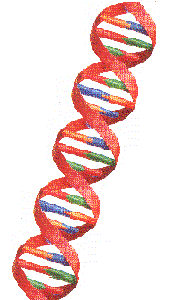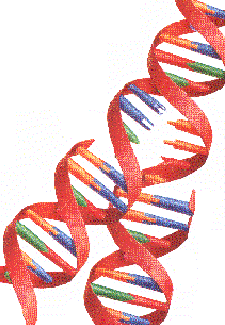 |
The way in which characteristics are transferred to the next generation was discovered by Gregor Johann Mendel, a Hungarian who became a monk and worked in Austria in the nineteenth century. Although he didn't use the word 'genes', but called them 'factors', Mendel was right in his conclusions, and his work is the basis of genetics and hybridising today.
Mendel's First Law The most famous example of Mendel's work on hybrids is the result of his experiments with Pea plants with red and white flowers. He found that if he crossed plants with a difference in just one characteristic, the next generation of plants would all be the same in that characteristic. This is called Mendel's First Law, or the Principle of Uniformity. Mendel's Second Law Plants have genes in their DNA for all their characteristics, and for each characteristic there are two genes. One is called dominant, and tells the cell of the new individual to do something (e.g. have red flowers), and the other is recessive, and will instruct the cell not to do something if there is a dominant gene for the same characteristic in the makeup of the new plant. Sometimes, both genes are equally dominant, and neither takes priority over the other. This is called 'co-dominance'. The parent plants each pass on one gene for each characteristic to the new plant. This is called Mendel's Second Law, or the Principle of Segregation. Mendel's Third Law It is a matter of chance which gene goes into which new cell, so each parent plant hands down instructions to do something and not to do something, and it is the combination of all these genes and the characteristics they give instructions for that makes the plants of the next generation so variable. This is Mendel's Third Law, or the Principle of Independent Assortment. |
| We now know that genes are contained on chromosomes (DNA), and chromosomes occur in pairs. The DNA is arranged in a double spiral, or helix, and when the cells are getting ready to divide, the DNA unzips into two halves called chromatides. Each chromatide carries either the dominant gene for a particular characteristic or the recessive gene for that characteristic. After the DNA splits, the cells reconstruct the other chromatide of each spiral, so a new complete set of DNA is ready to be passed on to the new generation. If the gene from both parents contains the same instruction (i.e. to be dominant or to be recessive), then the new individual is said to be homozygous. If the new individual contains one dominant and one recessive gene for the same characteristic, it is heterozygous. If the new individual inherits one dominant gene and one recessive gene for the same characteristic, it is said to be incompletely dominant, and both characteristics are equal. Crossing two homozygous individuals gives heterozygous offspring; crossing two heterozygous individuals gives homozygous offspring. |
 |
Sometimes, when they are unzipping, parts of the DNA get torn or damaged, which results in a new gene being formed. The pairs of chromosomes are in sets, the central two twisted together (picture a). Sometimes, when they untwist, part of the chromosomes get crossed over onto the other. If the two pieces of code contain the same dominant or recessive genes (picture b), this makes no difference, but when the pieces of genetic material are changed (picture c), new combinations of genes are passed to the next generation.

Because of the possibilities for so many different combinations of genes, it seems there will always be something different for us to grow in our gardens, and natural selection of plants with appropriate genes will often enable them to adapt to whatever conditions they have to grow in.
There's more about Mendel and his work on the University of Hamburg website.